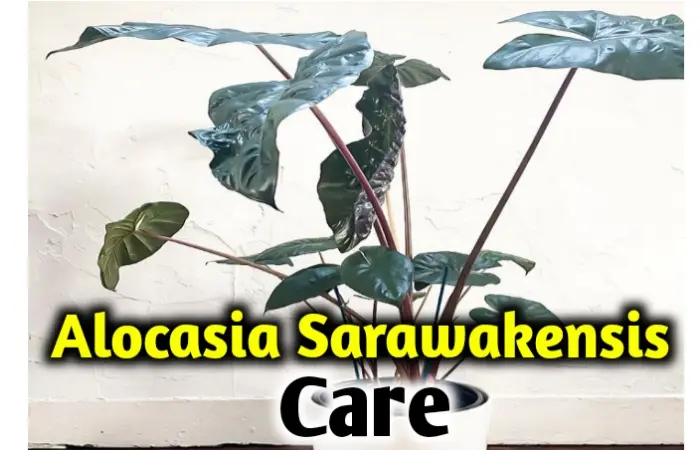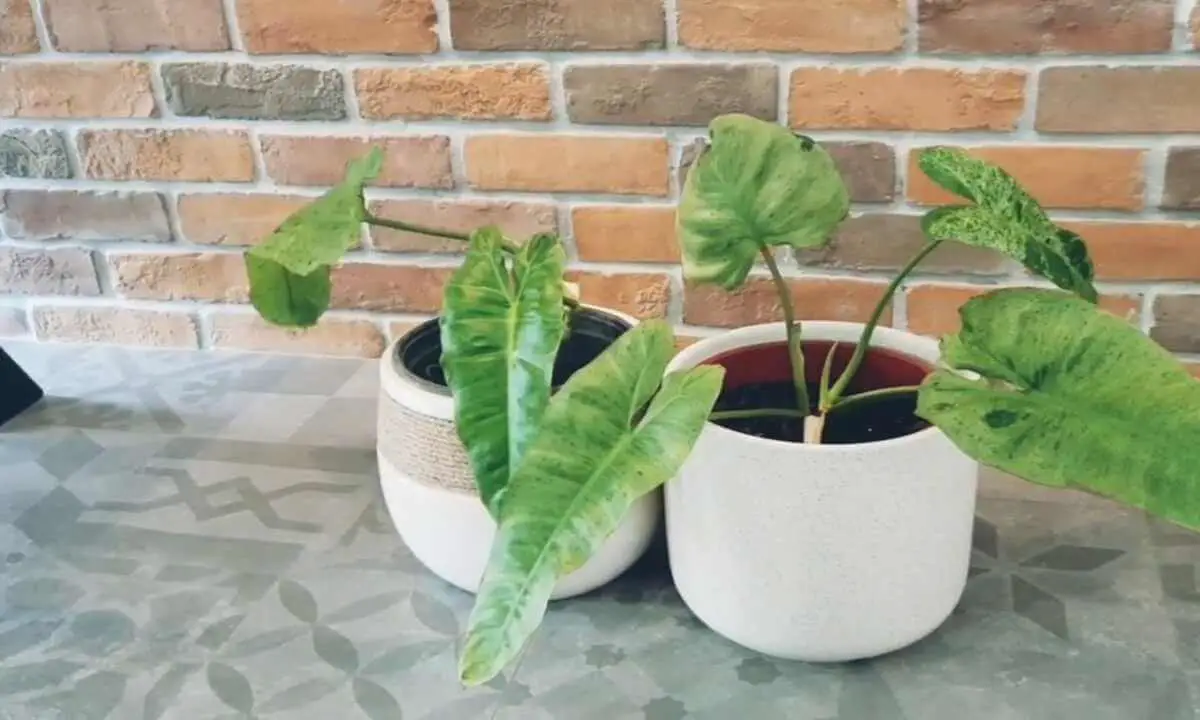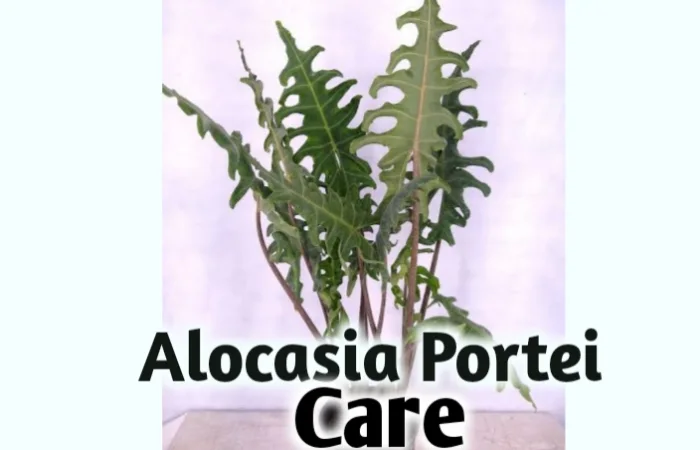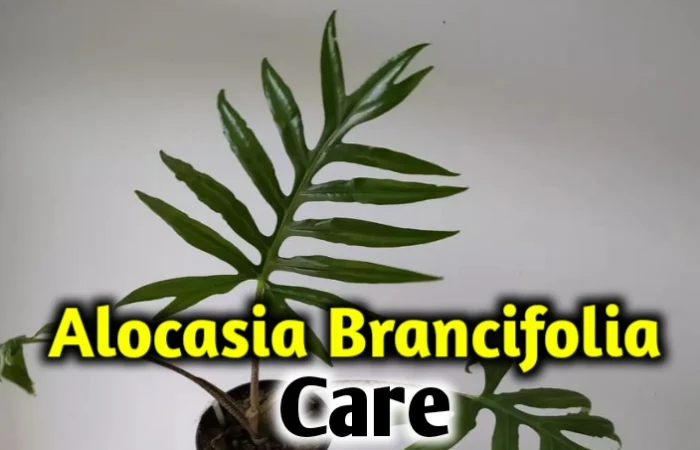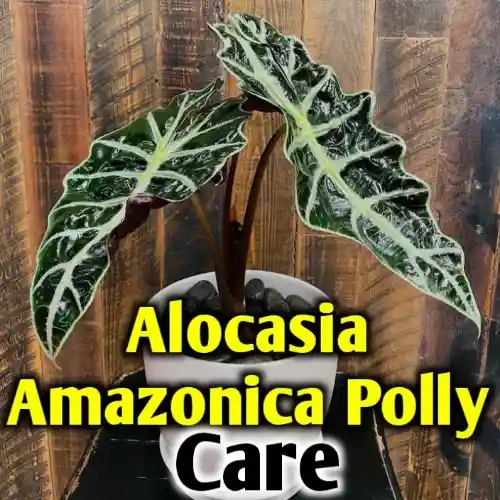Alocasia sanderiana care, propagation, leaves problems [All you need to know]
Are you interested in an alocasia sanderiana plant because of its wavy leaf structure?
I always feel excited to tell my experiences about a sanderiana plant as it’s one of my favorite plants. The different leaf shape makes it unique among other alocasia species.
That’s why I would like to present the characteristics, propagation method, caring guides and some more information about this plant. Besides, I will share with you how you can get this plant. So let’s get started.
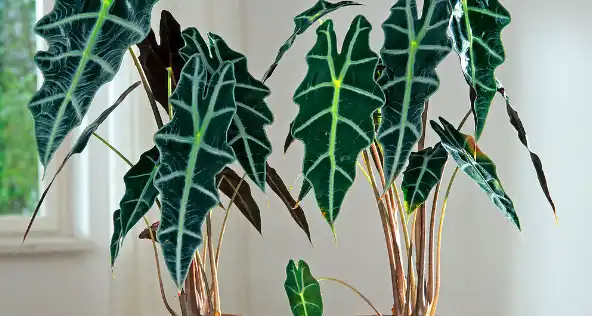
Overview
| Scientific name | Alocasia sanderiana |
| Other names | Sander’s alocasia, Kris plant |
| Family | Araceae |
| Origin | Northern Mindanao, Philippines |
| Plant height | 2 ft |
| Plant type | Tropical perennial plant |
| Leaf | Dark green to blackish green arrow-shaped leaves with wavy blades |
| Stem | Tuberous short stem |
| Sunlight | Bright indirect light |
| Watering | Once a week |
| Humidity | More than 60% |
| Temperature | 65°F to 85°F |
Where to buy alocasia sanderiana?
As you know, alocasia sanderiana is a rare plant. So, finding this plant may be troublesome for you. But don’t worry, you can quickly get it from some renowned plant seller websites. Else, you may also check them at your local nurseries.
Alocasia sanderiana plant care guide
To get a complete guide on alocasia sanderiana, you have to go through the detailed information with great attention that I have narrated here. Hopefully, you will enjoy it.
Alocasia sanderiana light demand
Don’t you think light is the most important factor for the sanderiana plant? It cannot produce food and energy for its life cycle without perfect sunlight. So be conscious of it so the plant may get bright and indirect sunlight for the whole day. Arrange for shade when the scorching mid-noon sunlight may fall on them.
Water needed for the alocasia Sanderiana Plant
Then comes the watering guide for an alocasia sanderiana plant. In a sentence, water them once a week. Excessive watering may stand in the root zone which will initiate the fermentation process. To avoid this problem, you may pinch your finger in the soil to understand the condition if the soil is dry or not. Then, water it.
Best soil properties for alocasia sanderiana
Sandy textured soil may be perfect for an alocasia sanderiana plant. But the sandy soil should be mixed with one part perlite and one part peat. Preparing a soil mixture in this way may provide enough nutrients to your plant.
Temperature and humidity for alocasia sanderiana
Alocasia sanderiana plants grow better at a normal room temperature present on a summer day. The optimum temperature ranges between 65°F to 86°F. Make sure that you have provided enough humidity with the temperature. In case of low humidity, you can use a humidifier to create a better condition for your plant.
The best fertilizer for the alocasia sanderiana plant
Fertilizer is a part of the plant’s better growth though the alocasia sanderiana plant doesn’t need much fertilizer. You can spray liquid fertilizers like (…) to them while diluting in water. Using fertilizers once in spring and once in summer is enough for their foliage growth.
Alocasia sanderiana plant propagation
Here comes one of the most important issues of this topic which is propagation. As sanderiana is a rare plant, you may not find them everywhere. So, you can multiply them by propagation.
Propagule
A propagule means the plant part that you are using for propagation. Uprooting a healthy mother plant, you can choose their stem part or taro root for propagation.
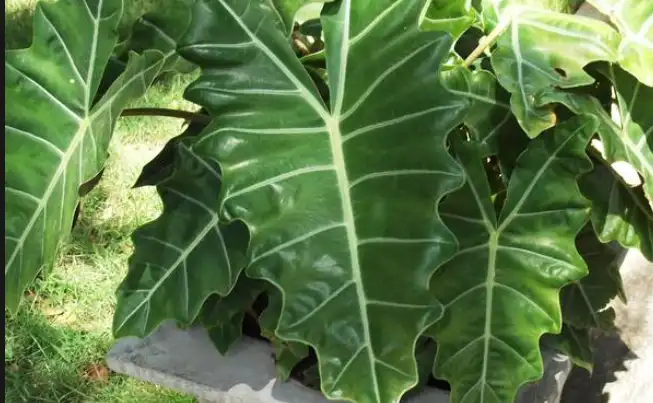
Cutting
Next, cut the propagule into small parts so that they bear enough portion of stem and root.
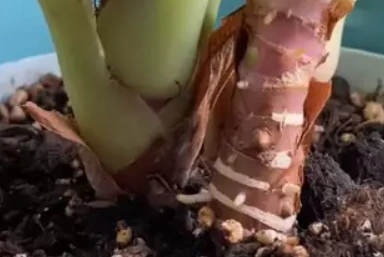
Planting in the pot
Finally, plant the separated part in the perfect soil mixture and water in a little amount.
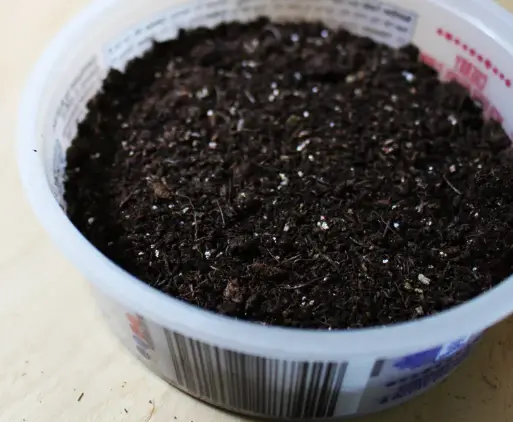
How to repot alocasia sanderiana plant
Transplanting an alocasia sanderiana plant is an easy task and helpful for your plant too if you are technical in this stage. The main point is you have to uproot the plant from the existing pot without disturbing the root system. Then, simply plant it in another pot having a soil mixture.
Why are my alocasia sanderiana leaves turning brown?
If you can see that your sanderiana plant is getting brown, then stop watering it. Brown leaves express the problem of root rot that is caused due to overwatering. So water as your plants’ demand and go for repotting in a severe case.

Why are my alocasia sanderiana leaves yellowing?
This problem may be caused due to a virus attack. Viruses hinder the production of chlorophyll. As a result, the leaves cannot produce food. Again, as the production of chlorophyll is stopped, the xanthophyll becomes expressed and the leaves are seen to be yellow.
Alocasia sanderiana vs alocasia polly plant
Alocasia polly is a beautiful plant having wavy blades just like the sanderiana plant. But the leaf color is lighter than the sanderiana plant. The green surface is not too dark in the alocasia polly plant and you have to focus on this matter if you want to differentiate them.
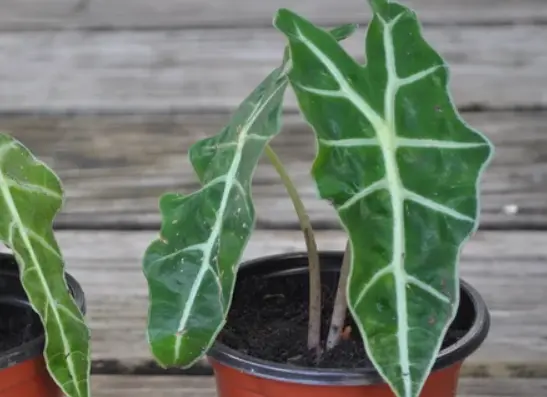
Alocasia sanderiana vs alocasia amazonica plant
This amazonica plant amazingly resembles the sanderiana plant. The only difference between them lies in their venation. The main veins are more in amazonica than sanderiana. The rest of the parts are almost the same.
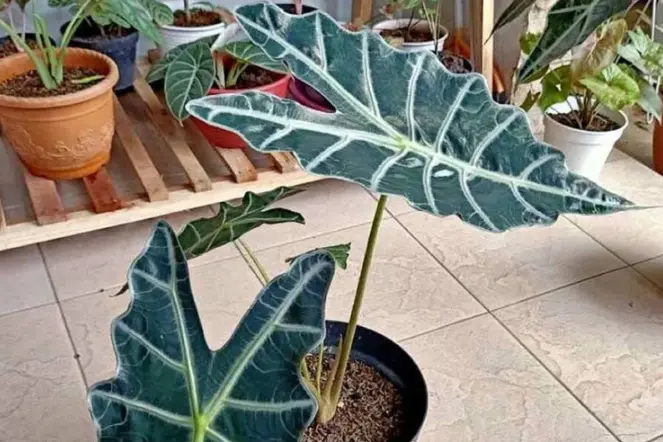
Alocasia sanderiana vs alocasia micholitziana plant
Alocasia micholitziana makes a similar vibe as the alocasia sanderiana plant. As you can see, the wavy blades and green petioles are the same in the two plants. But, the micholitziana leaves are broader and wider than the sanderiana plant and here you can make a difference between them.
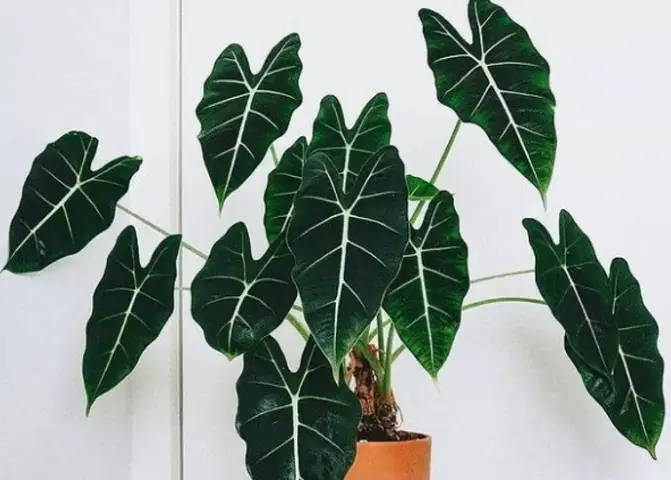
Is alocasia sanderiana toxic to cats?
Alocasia sanderiana is toxic to pets and children for the presence of calcium oxalate. It can create vomiting and toxicity which may cause breathing problems too.
Final thoughts
At last, I would like to say that if you want to keep a unique plant in your garden, you must try alocasia sanderiana. The different-looking leaves may give your garden or room corner an extraordinary outlook.
But to maintain the curved leaves and the glossy surface of the plant, you must have to fulfill all the requirements of the plant. Otherwise, problems like browning, yellowing, dead leaves etc. will destroy your plant. Hence, take care of your plant and enjoy your gardening.


